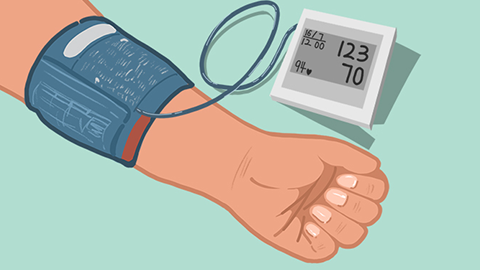How to treat white coat hypertension
White coat hypertension typically refers to patients whose blood pressure is elevated in the clinic setting but normal at home or in other non-medical environments. Management usually involves lifestyle modifications, home blood pressure monitoring, psychological and emotional regulation, regular professional assessments, and medication intervention when necessary. If home blood pressure remains consistently high or symptoms such as dizziness and palpitations occur, timely medical consultation is recommended.
1. Lifestyle modification: Reduce intake of high-salt and high-fat foods, engage regularly in mild exercises such as walking or yoga, maintain a healthy weight, and avoid staying up late and excessive alcohol consumption. Adopting healthy habits can reduce physiological stress responses and help stabilize blood pressure.
2. Home blood pressure monitoring: Use a calibrated electronic sphygmomanometer to measure blood pressure at consistent times each day (e.g., upon waking and before bedtime), and keep a record. Monitoring daily fluctuations helps assess the condition and guide treatment decisions, reducing reliance on clinic-based measurements.

3. Psychological and emotional regulation: Practice deep breathing, meditation, or similar techniques to alleviate anxiety and tension when encountering healthcare providers. Seek psychological counseling if needed to minimize transient blood pressure spikes caused by emotional stress and improve the white coat effect.
4. Regular professional evaluation: Undergo 24-hour ambulatory blood pressure monitoring every 3–6 months at a hospital. Combine this data with home measurements to comprehensively evaluate blood pressure control, screen for progression to sustained hypertension, and adjust treatment plans promptly.
5. Medication intervention when necessary: For patients with comorbidities such as diabetes or kidney disease, or those whose home blood pressure frequently exceeds normal ranges, short-term antihypertensive therapy under medical supervision may be considered to control blood pressure fluctuations and reduce long-term cardiovascular risks.
In most cases, long-term medication is not required; the focus should be on addressing triggers and stabilizing blood pressure. Daily routines should include regular sleep patterns, avoiding excessive fatigue, sitting quietly for 5–10 minutes before blood pressure measurement, maintaining emotional calm, and limiting caffeine intake. A stable physical and mental state supports effective blood pressure management.






